30 Years Later: USMNT 1990 World Cup Roster Player Capsules
Here’s more on each of the 22 players and the head coach who made a difference for U.S. Soccer some three decades ago.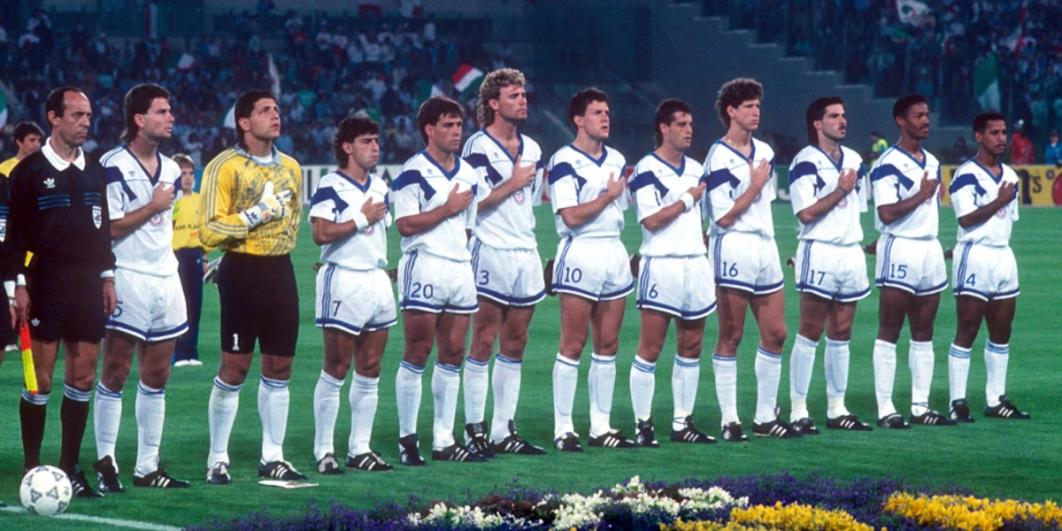



The USMNT’s journey to the 1990 FIFA World Cup was historic, and while it was three losses by the young team on the field in Italy, the groundwork was laid for the modern era of the U.S. Men’s National Team.
You’ve read how they arrived at Italia ’90 and their experiences once they got there. Here’s more on each of the 22 players and the head coach who made a difference for U.S. Soccer some three decades ago:
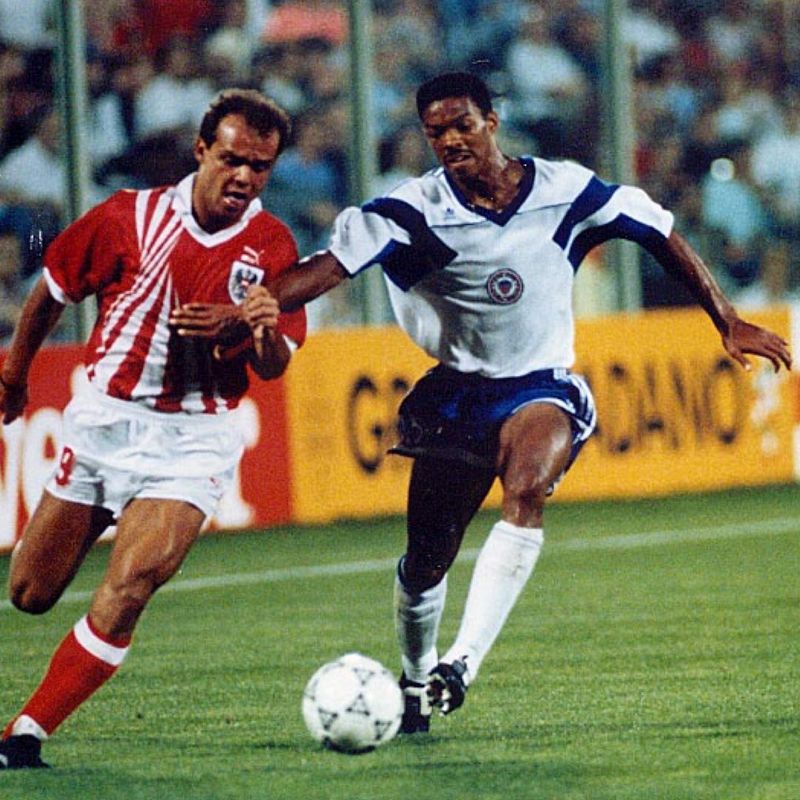
Born on Nov. 2, 1964 in Washington, D.C., Armstrong was a pioneer along with his friend Jimmy Banks as the first Black players born in the United States to play for the USMNT at a World Cup. He began as an attacking player and starred for the University of Maryland. With no outdoor league after the North American Soccer League folded after its 1984 season, Armstrong turned to the great indoors, performing for the Cleveland Force and Baltimore Blast in the Major Indoor Soccer League. After starting in both qualifiers in 1988, he broke his leg while playing for Baltimore in January 1989, missing most of the final qualifying round. Armstrong returned as a starter in a scoreless home tie with El Salvador and started all three matches at Italia '90.
He played for Santos in Brazil (1991), Maryland Bays in the American Soccer League (1991), Washington Warthogs in the Continental Indoor Soccer League (1995) and the Charlotte Eagles in the United Soccer League (1996). Armstrong made 81 appearances for the USMNT from 1987-1994, also featuring in the 1988 Seoul Olympics.
Co-founder and director of the East Nash Soccer Mission, Armstrong is a member of the National Soccer Hall of Fame, Maryland Soccer Hall of Fame and the University of Maryland Athletic Hall of Fame.
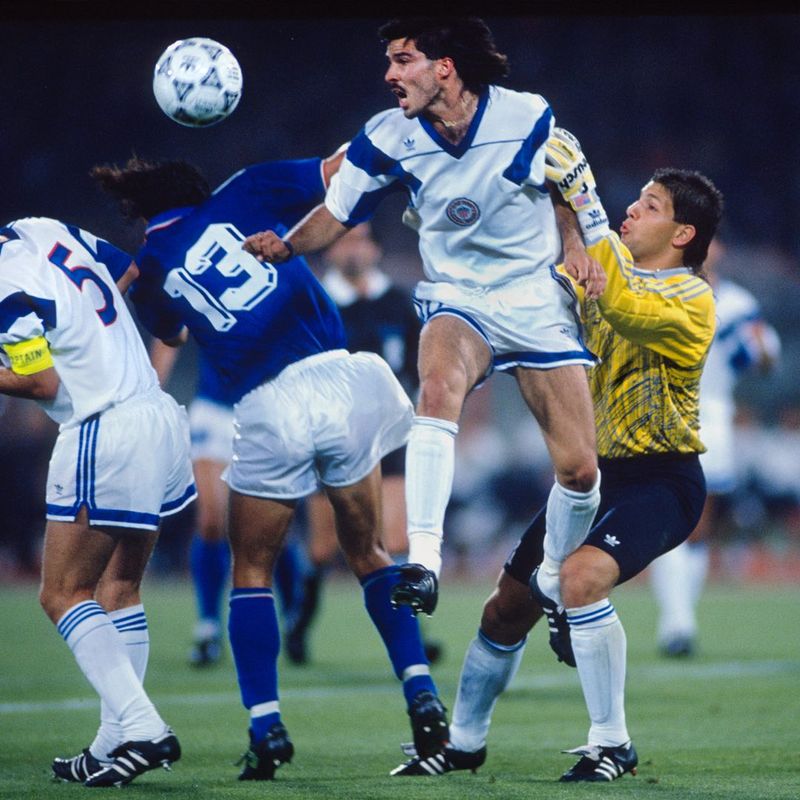
Three times a member of a World Cup team, Balboa made 127 appearances for the USMNT from 1988-2000. Born in Chicago on Aug. 8, 1967, Balboa captained the U.S. squad at the Under-20 World Cup in 1987 and made his qualifying debut in a 1-1 draw with Trinidad & Tobago in 1989 while still attending San Diego State University. While attending Cerritos College, Balboa was a placekicker on the football team and a two-time first time All-South Coast Conference soccer selection. He started the final two matches at Italia '90 and played for the San Diego Nomads, San Francisco Bay Blackhawks, Colorado Foxes, Club Leon, Colorado Rapids before ending his career with the MetroStars in 2002.
Balboa was voted a member of the MLS All-Time Best XI and is a member of the National Soccer Hall of Fame, Colorado Soccer Hall of Fame and currently is an analyst for Altitude TV, which broadcasts Rapids games. His father Louis played professionally in Argentina and was a member of the Chicago Mustangs of the North American Soccer League.
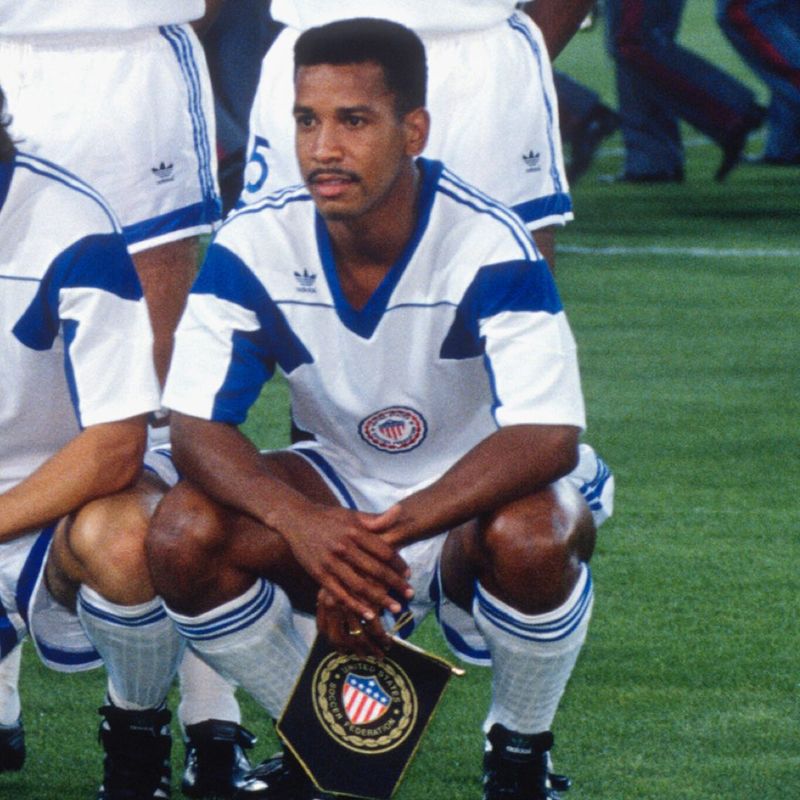
Born in Milwaukee on Sept. 2, 1964, Banks began playing at age six through a Salvation Army program near the city’s Westlawn Housing Projects. While performing for the Milwaukee Bavarians, he first acquainted with future U.S. head coach Bob Gansler. Beginning his collegiate career at UW-Parkside in 1983, Banks transferred to join Gansler at UW-Milwaukee. Banks and Desmond Armstrong became the first U.S.-born Black players to play for the USMNT in a World Cup. He made two appearances at Italia ’90 while playing 35 times for the Red, White and Blue from 1986-1991.
Without a first division professional outdoor league, Banks played his entire pro career indoors. Selected No. 1 by the Major Indoor Soccer League’s Kansas City Comets and the American Indoor Soccer Association’s Milwaukee Wave in the leagues’ respective 1987 drafts, he decided to sign with his hometown team, playing from 1987-1993. A league all-star in 1992, Banks was inducted into the Milwaukee Wave Hall of Fame.
He became head coach of the men’s team at the Milwaukee School of Engineering in 1999. During his 20 years, Banks amassed 198 wins, plus two NCAA Division III Tournament appearances and two NACC conference championships. Banks passed away April 26, 2014 at Columbia St. Mary’s Hospital in Milwaukee, Wisc., after a battle with stomach cancer at the age of 54.

Bliss earned his soccer spurs as an all-New York State player at Webster Schroeder High School and then for NCAA Division II powerhouse Southern Connecticut State University. Born in Rochester, N.Y. on Sept. 28, 1965, Bliss was drafted by the Cleveland Force (MISL), playing for the club for two seasons before moving outdoors to the Albany Capitals and Boston Bolts.
In the meantime, he impressed enough to earn his first cap in 1987 and wound up participating at the 1988 Summer Olympics in Seoul. The 5-8 defender started and played in most of the 1990 qualifiers and appeared in the USA’s final match at Italia '90 against Austria. He played 33 times for his country, scoring twice, from 1984-95. The World Cup opened up a career in Germany where he played for Energie Cottbus, Chemnitzer FC and FC Carl Zeiss Jena from 1990-96. He joined MLS for the inaugural season, spending time with Columbus, MetroStars and Kansas City Wizards from 1996-98 before moving over to the Connecticut Wolves.
Bliss currently works alongside 1990 teammate Peter Vermes as the Technical Director and Vice President of Player Personnel for Sporting KC.

Caligiuri started just one qualifier during the 1990 cycle, but what a memorable and historic performance it was on Nov. 19, 1989, when he scored the goal that sent the U.S. to its first World Cup in four decades with a 1-0 triumph at Trinidad & Tobago. He also holds the distinction of scoring the first USA World Cup goal in 40 years when he tallied against Czechoslovakia in the opening match of Italia ‘90.
Born on March 9, 1964, Caligiuri captained the 1985 UCLA team coached by the legendary Sigi Schmid that won the NCAA Division I title. He represented the U.S. at a special international all-star game in 1987 and started all three U.S. games at the Seoul Olympics. He went on to become one of the first U.S. players to play for a European team, performing with Meppen of the West German Second Division (1988-89), and missed the first three 1989 qualifiers because of his Meppen commitments. Caligiuri also competed for Hamburger SV, Hansa Rostock and SC Freiburg in Germany.
Returning home, he joined Columbus Crew SC for the 1996 inaugural MLS season and performed for the LA Galaxy in 1997 until his 2001 retirement. Caligiuri, a member of the National Soccer Hall of Fame, guided the Cal Poly Pomona men and women for several years at the same time. He is currently head coach at Orange County FC in the National Premier Soccer League.
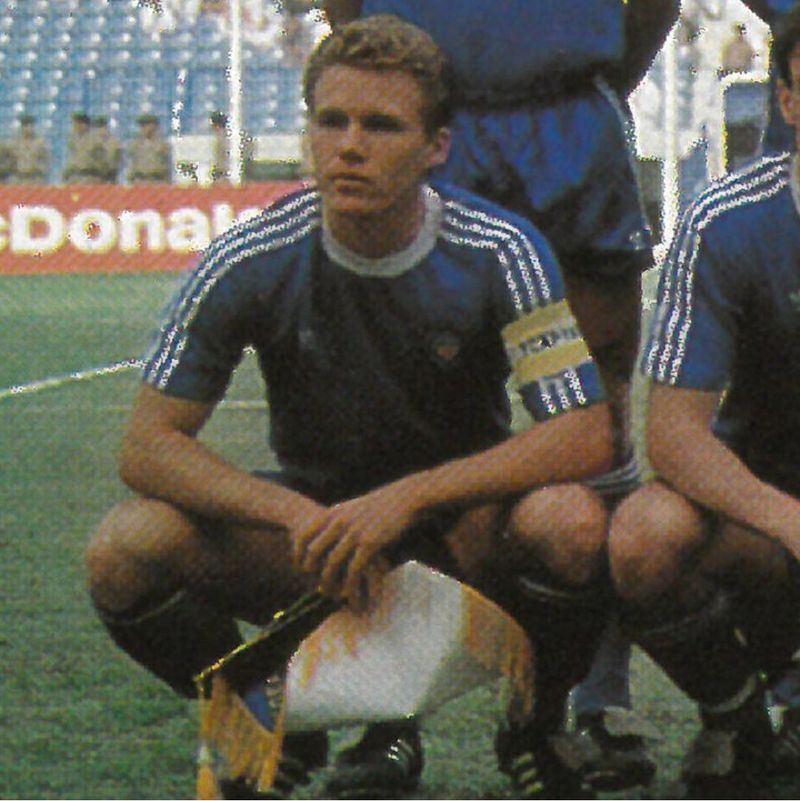
He did not see any action during qualifying or at Italia 90, but Covone did captain the U.S. U-20 team that finished fourth at the FIFA U-20 World Cup in Saudi Arabia in 1989. That team was coached by Bob Gansler, who was impressed enough to give the Hialeah, Fla. native an opportunity to make the senior squad. Born in on Aug. 8, 1969, Covone was one of the youngest players on the World Cup team at age 20.
A 5-6, 135-lb., midfielder, Covone was a mainstay for Wake Forest and earned five caps with the USA. He also played for the Fort Lauderdale Strikers in 1991-92.
Covone is a partner in the Bice Cole Law Firm in Coral Gables, Fla
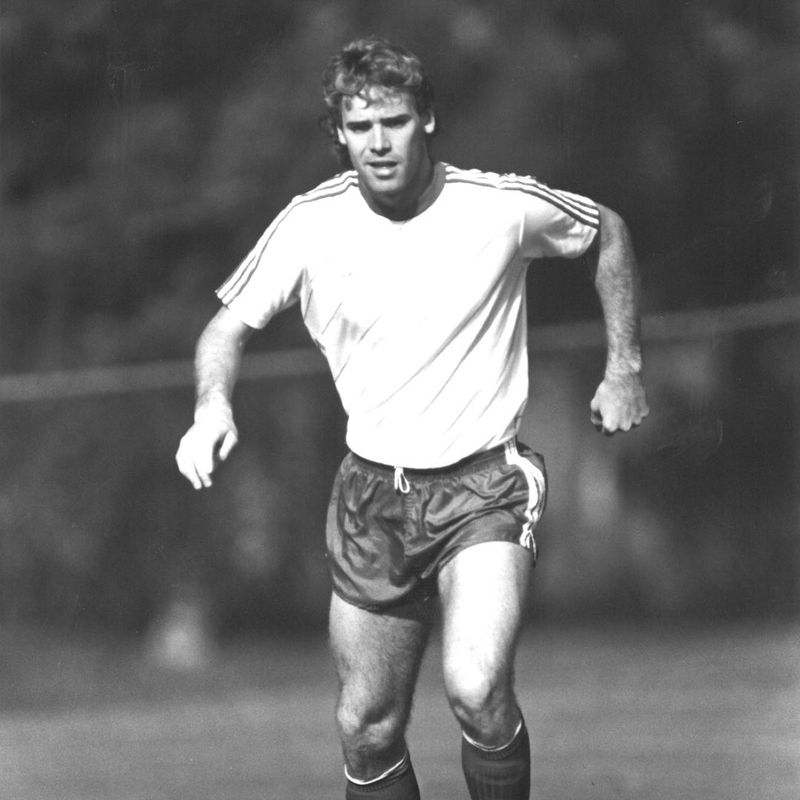
Doyle enjoyed a distinguished career for club and country, earning 53 caps. He also was a member of the 1988 Summer Olympics team and was named the first MLS Defender of the Year while starring for the San Jose Clash in 1996. A graduate of the University of San Francisco, the 6-3, center back helped stabilize the U.S. defense in his two Italia '90 appearances. A year after the World Cup, he scored what would stand as the game-winning goal in the USA’s 2-0 semifinal defeat of Mexico en route to helping the USMNT win the inaugural 1991 Concacaf Gold Cup.
After retiring as a player, he was general manager of the San Jose Earthquakes after he was an assistant coach with the club and was a member of the U.S. Soccer Board of Directors for two years.
Doyle is a member of the National Soccer Hall of Fame, California Youth Soccer Hall of Fame and University of San Francisco Hall of Fame. Doyle is the director of coaching of the Mustang Soccer League in Danville, Calif.
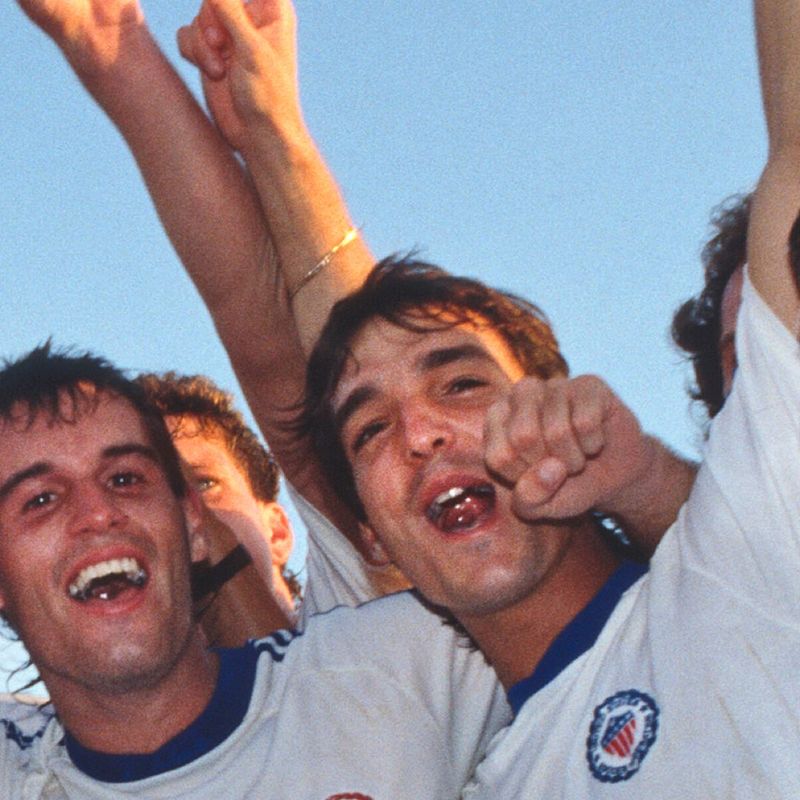
A creative player who could score or set up teammates, Eichmann earned his attacking reputation when he tallied 118 times for St. Thomas Aquinas High School in South Florida before going on to help Clemson University to the 1984 NCAA Division I men's crown. He also set a record for career assists (47).
After spending a summer with German Bundesliga side Werder Bremen, Eichmann began making an impact with the USMNT, helping the team qualify for the 1988 Summer Games and performing in South Korea as well. He scored four times in 29 appearances for the USA, most importantly scoring the game-winner in a 2-1 qualifying victory against Guatemala on June 17, 1989. He also played for the USA squad that finished third at the FIFA 5-A-Side Championship (now called the Futsal World Cup) and second at the 1992 tournament.
Born on May 7, 1965, Eichmann also set up the game-winning goal for the Fort Lauderdale Strikers in their 1-0 win over the Boston Bolts in the 1989 ASL final. He is founder of the Boca United Football Club and the Academy director of the South Florida Football Academy. Eichmann is also a member of the Clemson Athletic Hall of Fame.
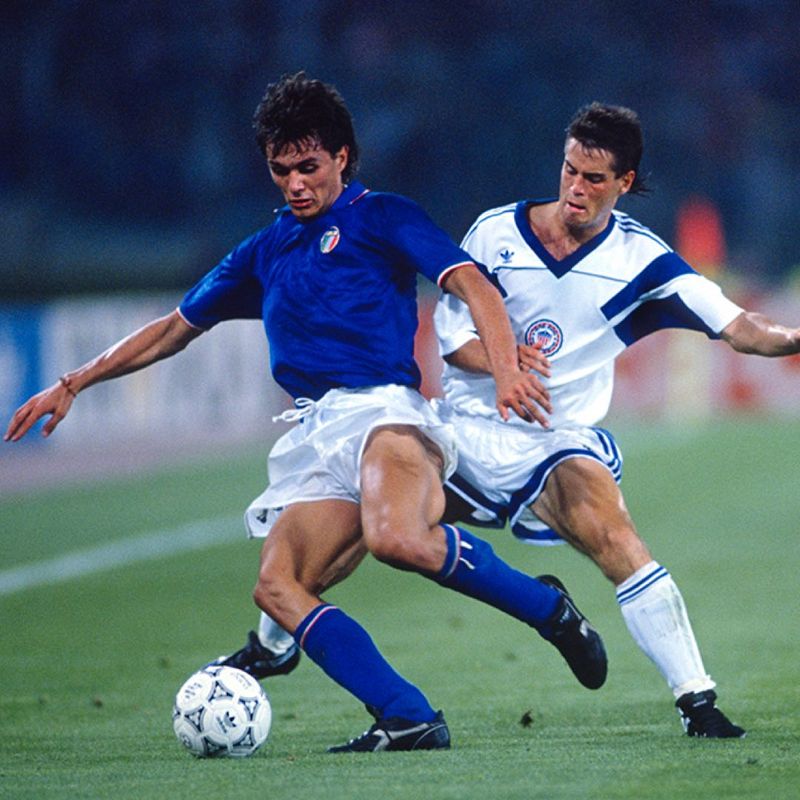
Growing up in the soccer hotbed of Kearny, N.J., Harkes learned the game and honed his skills along with fellow Italia 90 participants Tab Ramos and Tony Meola. Born on March 8, 1967 to Scottish immigrants in Kearny, he was the team's midfield engine during qualifying (performing in all eight matches in 1989) and the World Cup.
While 1984 can sound ominous to some people, it was a very good year for Harkes as he led Kearny high School to the New Jersey state championship with a 24-0-0 record. He also was named the Parade High School Player of the Year. After a standout career under head coach Bruce Arena at the University of Virginia, Harkes earned the Missouri Athletic Club Award as the top player in the country and decided to skip his senior season to play for the USMNT and in the 1988 Olympics.
A two-time World Cup veteran, Harkes made 90 appearances and scored six times. After making history at Sheffield Wednesday as the first American to play in the English Premier League and the second American to score at Wembley Stadium, he went on to play with Derby County and West Ham United. He returned home for MLS's inaugural season to help D.C. United two league championships before finishing his career with the New England Revolution and Columbus. Harkes was a New York Red Bulls assistant coach in 2006-07 and directed FC Cincinnati (USL Championship). A member of the National Soccer Hall of Fame, Harkes is head coach of the Greenville Triumph (USL League One).
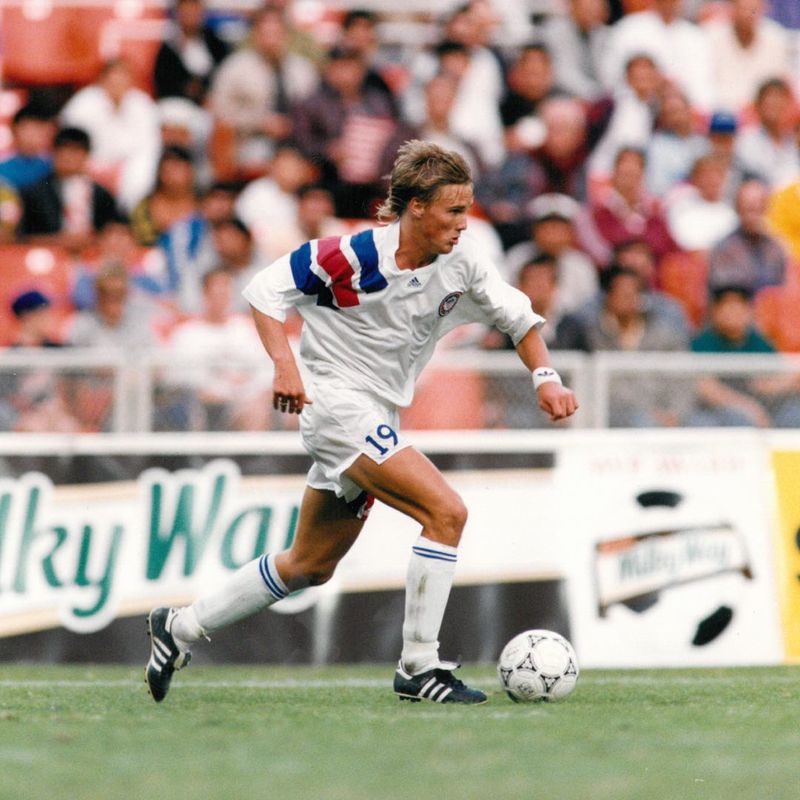
At 19, Henderson was the youngest player on the U.S. roster at Italia ’90 but did not see any action. He went on to earn 79 caps and scored three times during an international career that spanned 12 years. In 1992, he was a member of the Barcelona Olympic squad but did not see any action. Henderson's forte was his speed on the wing, which was never more vital in a pair of historic wins over Mexico during 1992 Olympic qualifying, helping secure a rare 2-1 triumph in Mexico City with a goal, and adding another in a stunning sweep of El Tri at home.
While playing for U.S. coach Bob Gansler at the Under-20 World Cup in 1989, the Edmonds, Wash. native tallied the game-winning goal in a quarterfinal victory against Iraq en route to the USA's fourth-place finish.
Henderson secured the 1988 National High School Player of the Year award at Cascade H.S. while serving as student body president. More success followed him at UCLA, helping the Bruins capture the NCAA Division I crown as a sophomore. The USMNT beckoned him in 1990 before taking the plunge across the pond, playing for FSV Frankfurt (Gemrany) and Stabaek (Norway). Returning to play in MLS with the Colorado Rapids in 1996, Henderson forged an 11-year career that included stops at Kansas City, Miami Fusion, Columbus Crew and the New York Red Bulls.
After retiring, Henderson served as an assistant coach with Kansas City before joining Seattle Sounders FC as the technical director. Most recently, he has been vice president of soccer and sporting director. Since its 2009 expansion season, Seattle has secured four Open Cups, the 2014 Supporters Shield and the 2016 and 2019 MLS Cup titles.
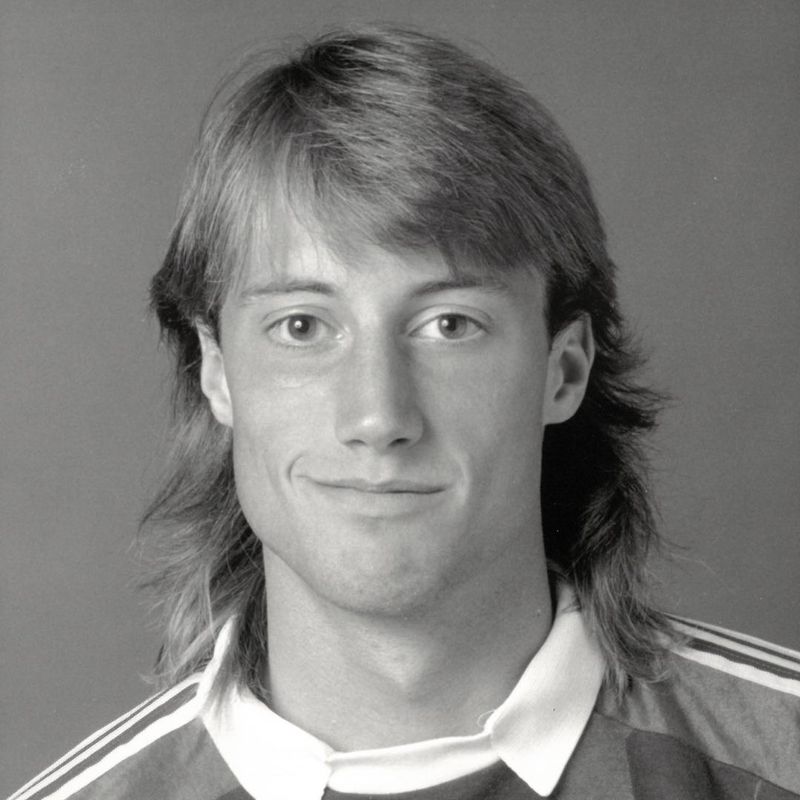
While Keller did not play a minute in qualifying or in Italy, he went on to forge a distinguished career at home and abroad. Keller, born in Olympia, Wash. on Nov. 29, 1969, earned first team All-American honors at the University of Portland. He embarked on an amazing 17-year career in Europe, starring for Millwall, Leicester City, Rayo Vallecano, Tottenham Hotspur, Southampton, Borussia Moenchengladbach and Fulham. He returned to the states and played for Seattle Sounders FC for three seasons before retiring in 2011.
Keller is one of only three USMNT players to be named to four different FIFA World Cup rosters – playing in the 1998 and 2006 tournaments – and amassed 102 caps during his international career. His most memorable performance came in the 1998 Concacaf Gold Cup semifinals, a 1-0 win over Brazil in which he made 10 saves, many of them spectacular.
A member of the National Soccer Hall of Fame, Keller's other honors include the Silver Ball at the 1989 U-20 World Cup when he helped the U.S. to a fourth-place finish, 1998 Gold Cup MVP, U.S. Soccer Male Athlete of the Year (1997, 1999, 2005) and 2011 MLS Goalkeeper of the Year. He currently serves as a color commentator on the Sounders' TV broadcasts.
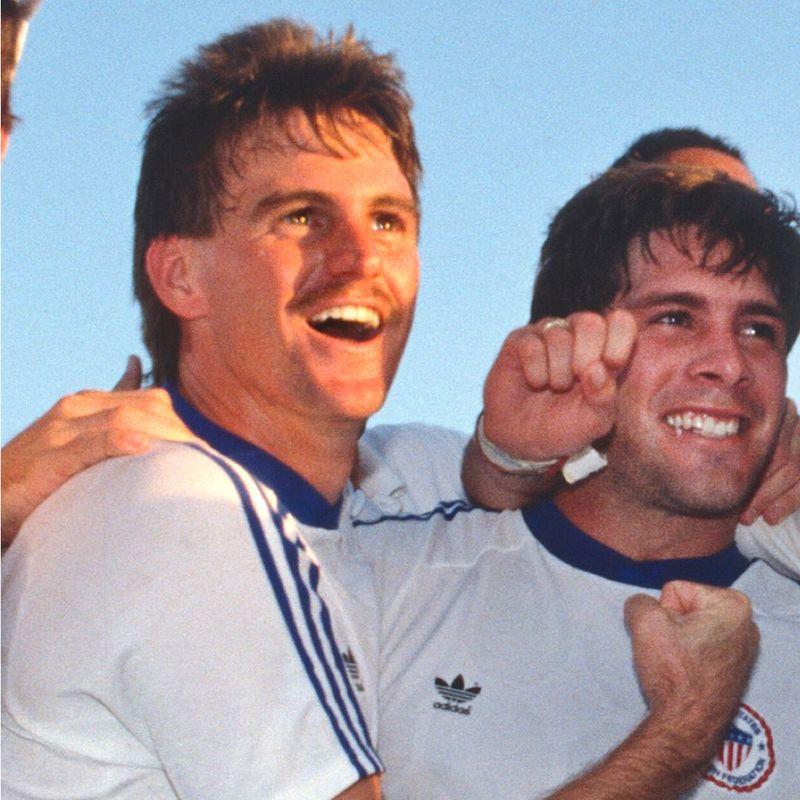
Another UCLA product, Krumpe captained the Bruins, who won the 1988 NCAA Division I title. He set up the winning goal in a 1-0 victory over American University in a game that was decided in the eighth extra time period. After earning a degree in Aerospace Engineering, Krumpe pursued a pro career with the Chicago Sting (MISL) for two seasons before entering the great outdoors with the Los Angeles Heat, Real Santa Barbara and Colorado Foxes.
He caught the eye of the USMNT coaching staff and earned a spot on the team. Born in Torrance, Calif. on March 4, 1963, Krumpe's most memorable international match came in the 5-1 qualifying victory over Jamaica in which he scored one goal - his lone tally for the team - and assisted on another. He made the final roster for Italia ’90 but didn’t feature in any of the games.
He also played a key role in helping the U.S. qualifying for the 1988 Olympics, connecting twice in a 3-0 triumph over Canada, which kept the Americans' hopes alive. He started all three matches in Seoul. Krumpe earned 24 caps over six years. He will enter his 23rd year as men's soccer coach at Loyola Marymount University, having directed the Lions to several NCAA tournament appearances.
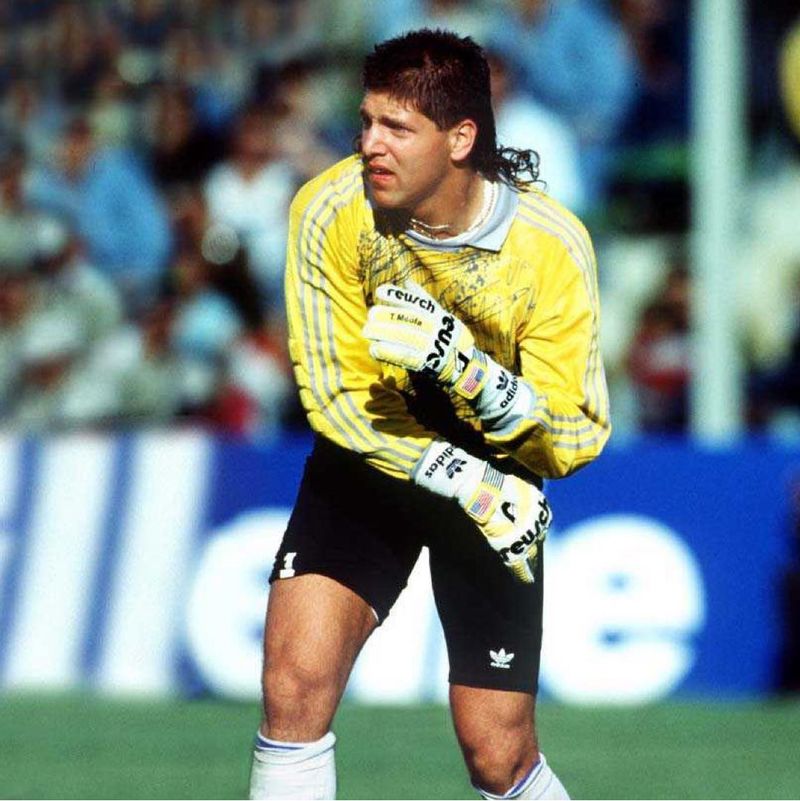
If Meola ever writes a book, he might want to call 1989, "His Favorite Year." Not only did he break into the USMNT's Starting XI, he backstopped the final four matches as the Americans clinched their first World Cup berth in 40 years. He was attending the University of Virginia at the time, helping that school to a share of the NCAA Division title with Santa Clara University. Meola also won the Hermann Trophy and the Missouri Athletic Club honors as the best men's player that year before playing all three matches in Italy.
Meola hardly rested on his laurels, playing for the MetroStars, who were close to his boyhood home in Kearny, N.J. He eventually joined the Kansas City Wizards, leading the Bob Gansler-coached team to the 2000 MLS Cup crown. The year 2000 wasn't too bad either as Meola just about swept every major award category, including three prestigious honors (MLS Cup Final MVP, Goalkeeper and Comeback Player of the Year following knee surgery in 1999).
Born in Bellevile, N.J. on Feb. 21, 1969, Meola grew up with John Harkes and Tab Ramos, earned 100 caps and went on to two more FIFA World Cups – captaining the side and playing all four matches in 1994 before serving as a reserve in 2002. The 6-1, 205-lb. goalkeeper also was the anchor of the Long Island Rough Riders' 1995 U.S. Interregional Soccer League team with future U.S. international Chris Armas, and even dabbled in indoor soccer with the New Jersey Ironmen. Meola, who joined the Chicago Fire as a color commentator in 2020, had a similar role for FOX during the 2018 World Cup. He also has co-hosted the radio show Counter Attack on SiriusXM since 2013.

Murray is a great answer to a trivia question: who scored the second goal for the USA at Italia 90? He accomplished that feat in a 2-1 defeat to Austria. When he called it an international career in 1993, the 6-1 striker was the USMNT's all-time leading goal-scorer (21). The numbers say in the USMNT media guide that Murray played 85 times for his country, but he wore the Red, White and Blue many more times than that. During World Cup warm-up matches, the Americans played several club teams, but those matches didn't count as official internationals.
While recording 40 goals and 40 assists at Clemson University, Murray helped the Tigers capture the 1984 and 1987 NCAA Division I titles while earning All-American honors and the Hermann Trophy. His heroics led to Soccer America naming Murray to its college team of the century. Born in Germantown, Maryland on Jan. 25, 1966, Murray was also a member of the U.S. National Futsal Team which placed third at the 1989 Five-A-Side World Championship and participated in two matches at the 1988 Olympics.
He is director of player development and parent engagement at the Center for Soccer Excellence at The St. James in Springfield, Virginia. He is a member of the National Soccer Hall of Fame and the Clemson University Hall of Fame.
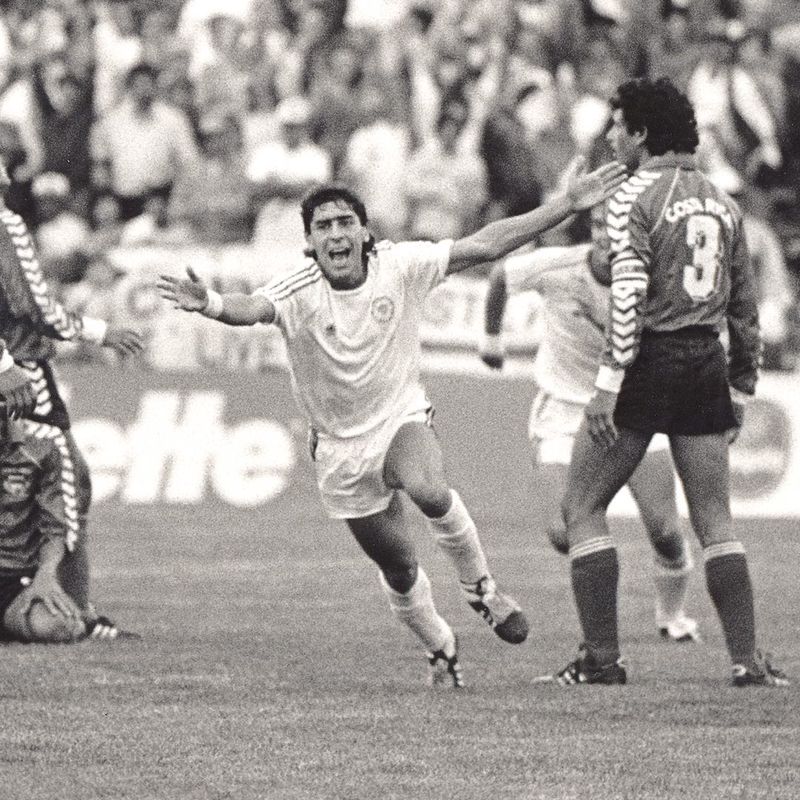
Arguably the most talented and creative U.S. player of all-time and definitely of his generation, Ramos was a driving force on whatever team he played for. That included leading St. Benedict's Prep (Newark, N.J) to the state championship while being named Parade Magazine's Player of the Year, the U.S. U-20 team, the 1988 Olympic Team and the 1989 Futsal National Team at the Five-A-Side World Championship. He was drafted as the 10th overall pick in the 1984 NASL Draft but decided to attend North Carolina State instead.
His two best known international goals were scored against Costa Rica in 1-0 results eight years apart. In 1989, Ramos found the net in a home win in St. Louis, and in 1997 he added a long-range strike for another one-goal victory in Portland.
Born in Montevideo, Uruguay on Sept. 21, 1966, Ramos went on to take part in the 1994 and 1998 World Cups and made 82 international appearances while tallying eight times. A hot property after Italia '90, the third part of the Kearny, N.J. triumvirate, signed with Real Betis (Spain) before moving to Tigres. He returned to the U.S. in 1996 to finish out his career with his "hometown" team, the MetroStars, playing seven years before retiring in 2002.
Ramos moved into coaching with the U.S. U-20 MNT, directing the side to four consecutive U-20 World Cups and also served as an assistant coach under Jurgen Klinsmann with the USMNT. A member of the National Soccer Hall of Fame, Ramos' is currently the head coach of the Houston Dynamo.
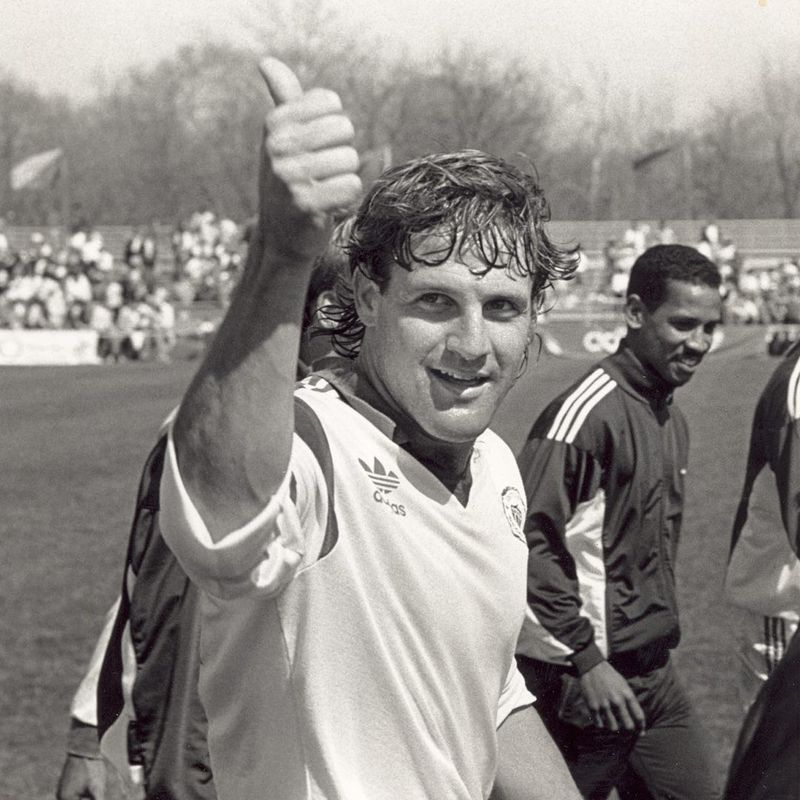
While starring at Thomas Jefferson High School in Annandale, Va., Stollmeyer was named the National Amateur Soccer Player of the Year in 1981. He was taken by the Tampa Bay Rowdies in the first round of the NASL Draft but decided to attend Indiana University. A three-time All-American, the midfielder played a key role in the team's 1982 and 1983 NCAA Division I championships.
Born in Pittsburgh, Pa. on Oct. 25, 1962, Stollmeyer competed in the 1988 Seoul Olympics and played 31 times for the national side. Professionally, he also performed for the Cleveland Force, Arizona Condors and Washington Stars before retiring from soccer for good in 1990. He is one of a handful of USMNT players who was married at the time of the World Cup.
Today, Stollmeyer is vice president of investments for Raymond James in Indianapolis, Ind.

Sullivan, who was born in San Jose, Calif. on April 18, 1965, was a unique two-sport star at Cupertino H.S. in soccer and American gridiron football. As a wide receiver, he set Northern California records for the longest touchdown reception (96 yards) and the most receiving yards in a game (197). But it was in college that Sullivan forged his soccer reputations, playing two years at San Diego State and finishing at the University of Tampa, earning All-America honors while scoring 35 goals in two seasons.
The National Team came calling when he was still at Tampa in 1987, starting a six-year tenure during which he played 19 times and scored twice. Sullivan was one of a handful players who had international experience on the team, playing for US Joué-lès-Tours and Le Touquet AC in France. He made two appearances at Italia '90, coming on as a substitute in the first two games.
He spent most of his playing career overseas, performing for Győri ETO FC (Hungary), Landskrona BoIS (Sweden), Brøndby IF (Denmark), Hertha BSC (Germany) and Yucatan (Mexico) before competing for the San Francisco Bay Diablos and San Jose Clash. After retiring, Sullivan became a commentator for FOX Soccer Channel and later BeIN Sports, including as an analyst for the last four World Cups.

Trittschuh holds the distinction of being the first American-born player to perform in the European Cup, playing with Sparta Prague (Czechoslovakia) in 1991. Born in Granite, City, Ill. on April 24, 1965, Trittschuh was a high school All-American at Granite City High School before going on to play at Southern Illinois University Edwardsville where he twice earned All-America honors and is a member of the school's Hall of Fame. He was selected by the St. Louis Steamers in the Second Round of the 1987 MISL Draft, but after the team folded the following year, Trittschuh concentrated on the outdoor game.
Trittschuh made his USMNT debut in 1987, took part in the 1988 Summer Olympics in Seoul and played every minute of the USA's qualifying matches for Italia '90. The defender competed for SVV Dordrecht in one season but spent most of his pro career in the U.S, playing for the Tampa Bay Rowdies, Fort Lauderdale Strikers, Montreal Impact, Colorado Rapids and indoors with the St. Louis Ambush and Tampa Bay Terror indoors. He coached the Colorado Springs Switchbacks FC for five years before being named coach of Saint Louis FC in January 2020.

Born on Feb. 6, 1963, Vanole helped start the tradition of USMNT and Major League Soccer goalkeepers who starred at UCLA (Brad Friedel, Nick Rimando, Matt Reis were among the others), backstopping the Bruins to the 1981 NCAA Division I crown. He went on perform for the Wichita Wings in the Major Indoor Soccer League (1987-88), San Jose Earthquakes in the Western Soccer Alliance (1988) and San Francisco Bay Blackhawks in the American Professional Soccer League (1991).
The 6-2, 225-lb. Vanole made qualifying appearances, surrendering three goals. His most memorable save came late in the 1-0 win over Costa Rica, when he saved a late penalty kick to preserve the win. The Redondo Beach, Calif. native represented the USA 13 times. He went to Italy as the team's third goalkeeper but did not see any action. He passed away from a heart attack on Jan. 15, 2007.

If there’s a position or role the 6-foot, 170-lb. Vermes hasn't played, it isn't known. As a player, he performed at forward, midfield and defense, being named the 2000 MLS Defender of the Year. Born in Willingboro, N.J. on Nov. 21, 1966, Vermes starred for the Delran High School squad, scoring 109 goals. After a year at Loyola College in Maryland, Vermes transferred to Rutgers University earning All-American accolades and being named runner-up for the National Player of the Year award while registering 21 goals and 10 assists.
After getting his first call-up to the national team in 1988, he played for Rába ETO FC (Hungary) and Volendam (Netherlands) as one of the few players to have European experience at that time. Vermes tallied 11 times in 66 international matches, also competing in the 1988 Summer Olympics and 1989 Five-A-Side team that finished third at the world championships while being a regular during World Cup qualifying. After four seasons at Figueres (Spain), Vermes returned to the USA to play in MLS with the MetroStars, Colorado Rapids and Kansas City Wizards, who won the 2000 MLS crown.
In a profession that has a high coaching mortality rate, Vermes has been the shining exception to the rule at Sporting Kansas City. With Sporting Kansas City since 2006, Vermes became head coach in 2009 and also serves as the Sporting Director. During his tenure, Vermes has led the club to the 2013 MLS Cup as well as the 2012 and 2015 Lamar Hunt U.S. Open Cup titles.

Windischmann's career was cut short by knee injuries, but he made an impact as captain of the Italia '90 squad. Born in Nuremberg, Germany on Dec. 6, 1965, he was one of the few players left over from the unsuccessful attempt to qualify for the 1986 World Cup and impressed first head coach Lothar Osiander and then Bob Gansler.
He became a USMNT regular, playing three games at the 1988 Seoul Olympics, scoring in a 1-1 draw vs. Argentina. In contrast to many of his teammates, Windischmann played for the semi-pro Brooklyn Italians before trying out the MISL with the Los Angeles Lazers. He also starred at two FIFA 5-A-Side tournaments for the USA, which finished third in 1989 and second in 1992.
He injured his knee during the latter tournament and was forced to retire from the game. The defender, who started all 10 qualifying matches for Italia '90, was U.S. Soccer's 1989 Male Athlete of the Year. He earned 50 total caps for the USMNT and holds the team record for most consecutive matches played at 36.
Today, Windischmann teaches at the Susan B. Anthony Academy in Queens, N.Y. and deals with at risk students in the Teen Center in New York City.
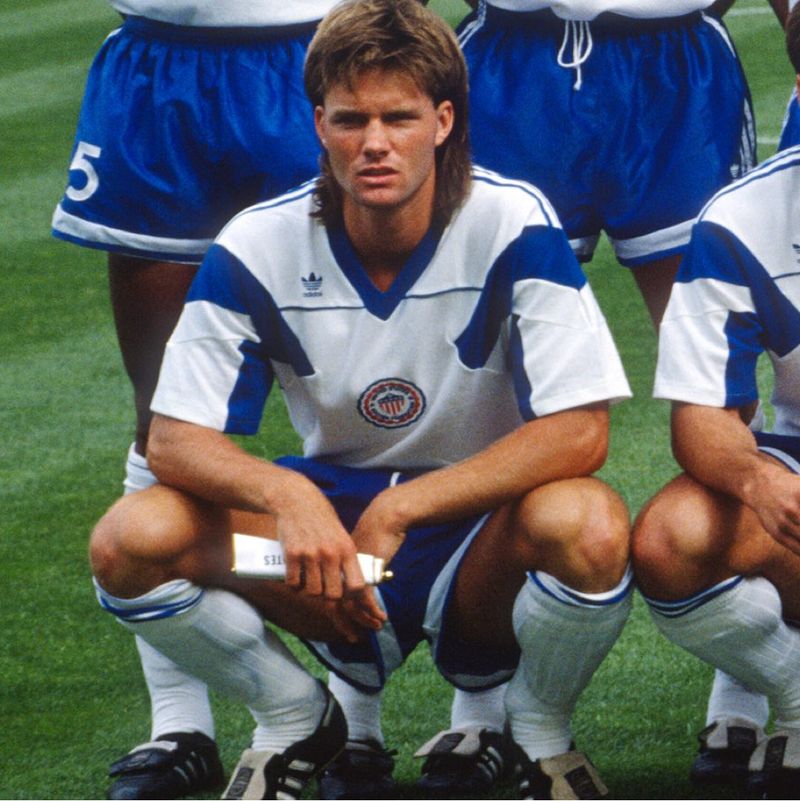
An excellent run of warm-up matches helped the Fullerton, Calif. native secure a Starting XI spot against the Czechs in the opening match of Italia '90, but he never set a foot on the field after that match. Wynalda holds the dubious distinction of being the first American to have receive a red card in a World Cup match, which occurred in the 53rd minute of the 5-1 loss.
Putting that behind him, Wynalda forged a reputation as an international goal-scorer. He overtook Bruce Murray as the USMNT’s scoring leader in 1996. Ending his career with 34 goals in 106 caps, Wynalda held the scoring record for 12 years until he was surpassed by Landon Donovan in 2008. One of his most memorable goals was his spectacular free kick in the 1-1 draw against Switzerland in the opening match of the 1994 FIFA World Cup. The goal helped the USA secure its first result in World Cup play in 44 years and helped push the team into the Round of 16.
Born on June 9, 1969, Wynalda showed his scoring prowess for the Westlake Wolves in the AYSO, outscoring the rest of the division (58 goals). It continued at Westlake High School as a three-time All-California selection and at San Diego State, helping the Aztecs reach the 1987 NCAA Division I final and finishing with 34 goals and 24 assists.
Signing a pro contract with U.S. Soccer in 1990, Wynalda left school. He ventured overseas to play for FC Saarbrücken and then VFL Bochum in Germany before coming back home to play for the San Jose Clash. His MLS journey took Wynalda to the Miami Fusion, New England Revolution and Chicago Fire. U.S. soccer fans will know Wynalda as a former color commentator for Fox Sports and ESPN and as a coach for the Atlanta Silverbacks, Los Angeles Wolves and the Las Vegas Lights of the USL Championship. A member of the Concacaf 1990s-decade team, Wynalda is a member of the National Soccer Hall of Fame and the Ventura County Sports Hall of Fame.
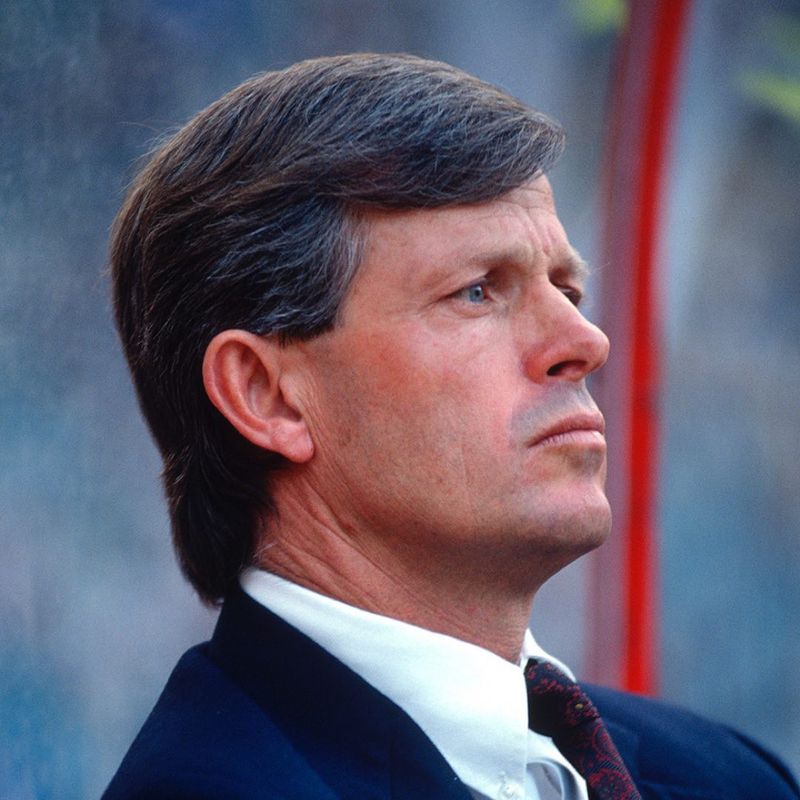
Gansler just about has done it all on every level, playing for the USA in World Cup and Olympic qualifiers, professionally with the Chicago Mustangs and coaching college, amateur, professional, youth national teams and the full squad. Born in Musci, Hungary on July 1, 1941 - he has German ancestry - Gansler emigrated to the U.S. with his family when he was 11. While pursuing a graduate degree at Marquette University, Gansler started his coaching journey, directing the Marquette University High School. He moved on to coach the University of Wisconsin-Milwaukee from 1984-89, serving in that role while also taking the reins as the U.S. U-20 head coach leading up to the 1989 FIFA World Youth Championship. Several days after guiding the U.S. to a fourth-place finish at the U-20 World Cup in Saudi Arabia, Gansler was named coach of the national team, guiding the side through its first successful World Cup qualification since 1950.
Following his tenure as USMNT head coach, Gansler led the A-League’s Milwaukee Rampage, before later directing the Kansas City Wizards to the 2000 MLS Cup championship and was an assistant coach with Toronto FC in 2007. Gansler is a member of the National Soccer Hall of Fame, Milwaukee Rampage Hall of Fame and the United Soccer League Hall of Fame.




